29+ IEEE Citation Examples to Download
In the world of academia and research, proper citation is crucial for acknowledging and honoring the work of others while maintaining academic integrity. The Institute of Electrical and Electronics Engineers (IEEE) has established its own citation style, which is widely used in engineering, computer science, and other technical disciplines. This article serves as a comprehensive guide to understanding IEEE citation, providing step-by-step instructions and examples, and addressing frequently asked questions to help you navigate this citation format effectively…..
1. IEEE Citation Reference Example
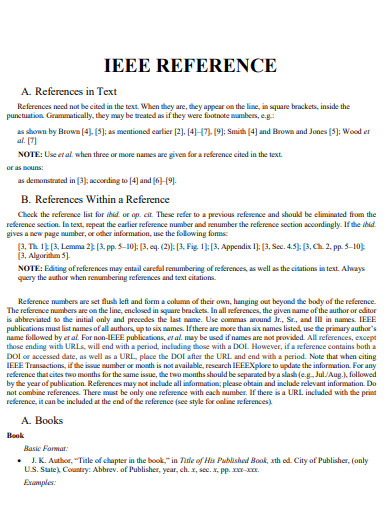
ieeeauthorcenter.ieee.org
2. IEEE Citation Format
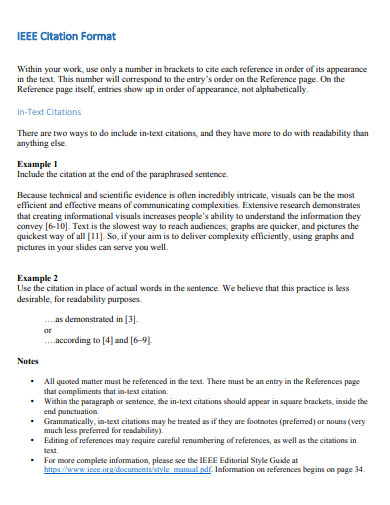
bpb-us-w2.wpmucdn.com
3. IEEE Citation Journal Example

trp.org.in
4. IEEE Citation Book Example
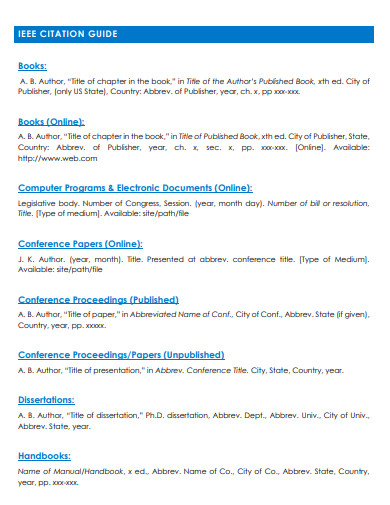
uah.edu
5. IEEE Citation Bibliography Example

comunidad.udistrital.edu.co
6. IEEE Text Citation Example
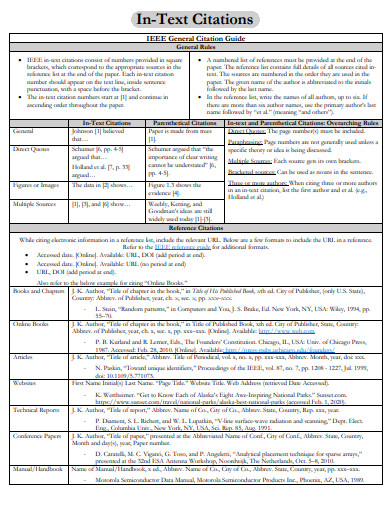
sjsu.edu
7. IEEE Citation Style Example
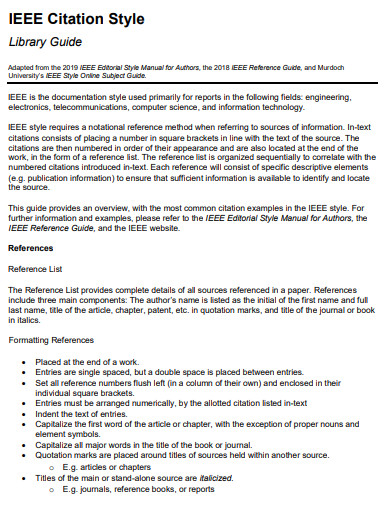
keyano.ca
8. APA 7 Citation Example
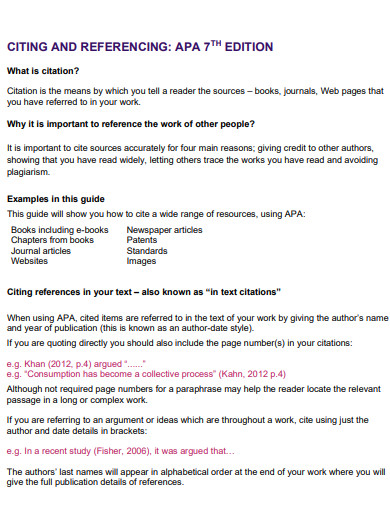
lboro.ac.uk
9. Sample IEEE Citation Example
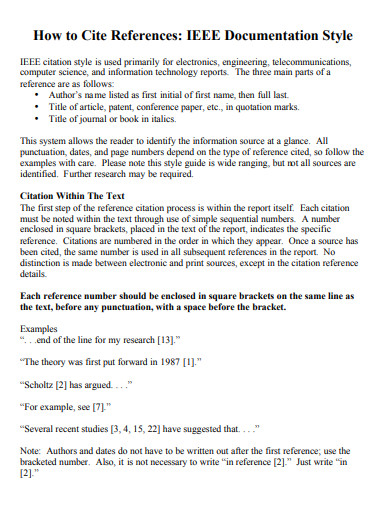
ieee-dataport.org
10. IEEE Citation Sheet Example
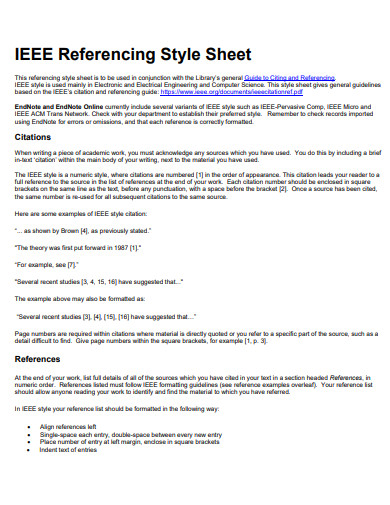
bath.ac.uk
11. IEEE Citation Style Guide Example
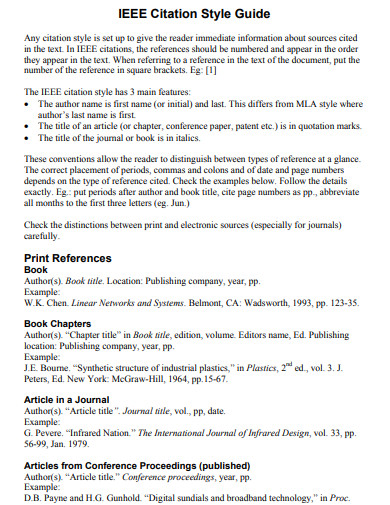
ijssst.info
12. IEEE Citation Formatting Guide Example
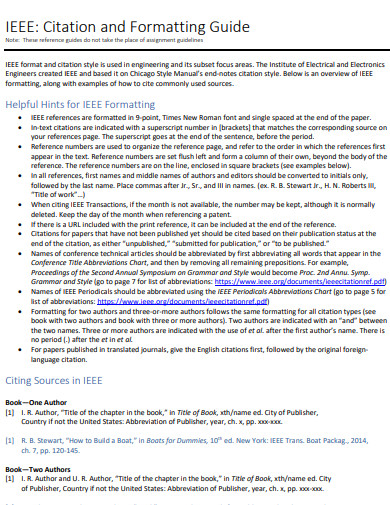
fgcu.edu
13. IEEE Citation Figure Example
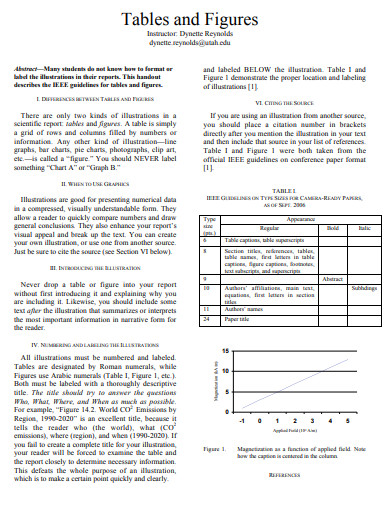
my.ece.utah.edu
14. IEEE Citation Paper Example
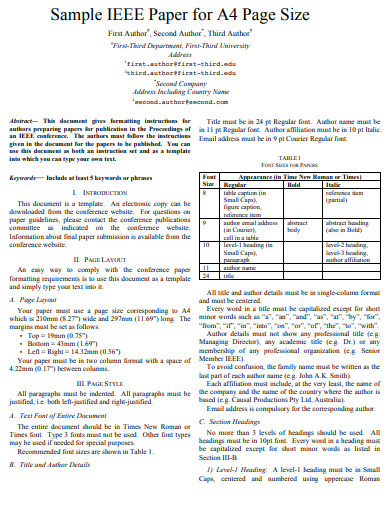
amity.edu
15. IEEE Citation Multiple Example

um.edu.mt
16. IEEE Citation and Writing Guide Example
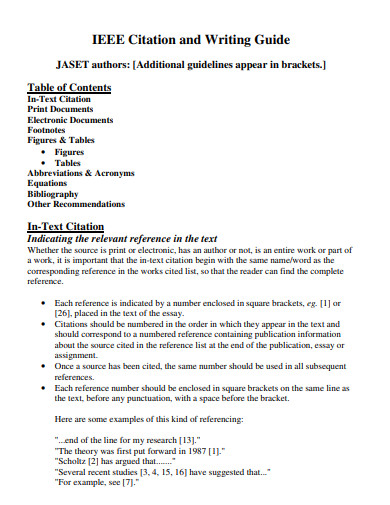
faculty.washington.edu
17. IEEE Citation in PDF
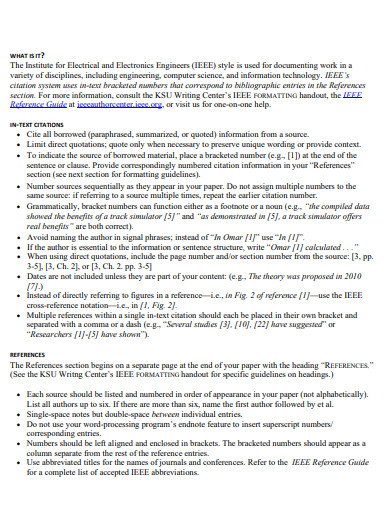
writingcenter.kennesaw.edu
18. IEEE Citation Report Example
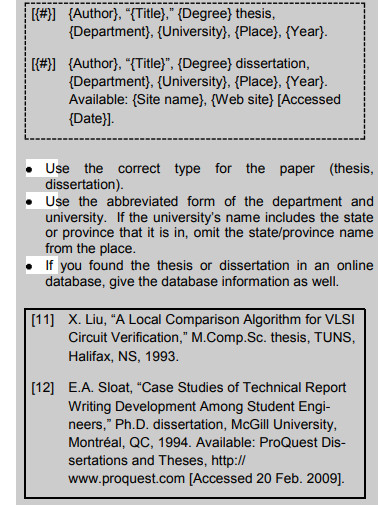
users.encs.concordia.ca
19. IEEE Citation Direct Quote Example
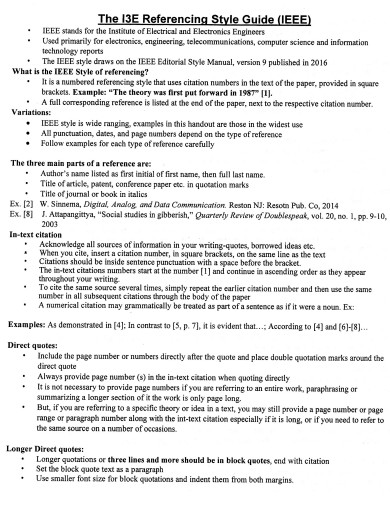
bowiestate.edu
20. Standard IEEE Citation Example
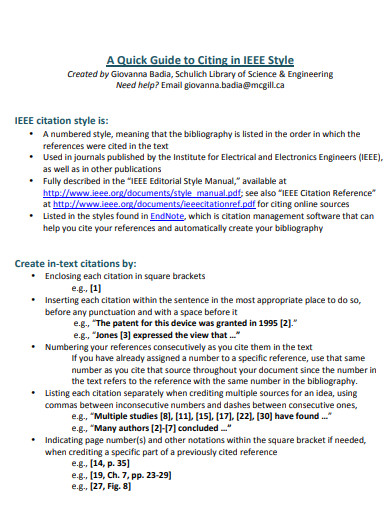
journalofbabylon.com
21. IEEE Citation Page Example
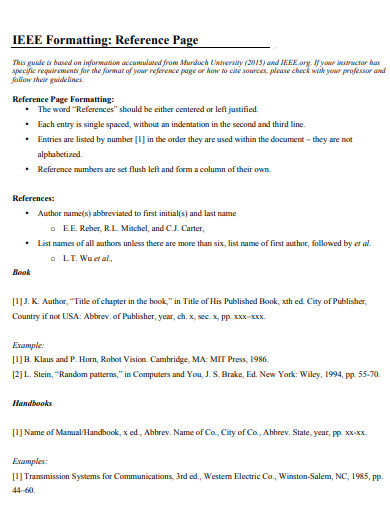
tamucc.edu
22. IEEE Citation Footnote Example
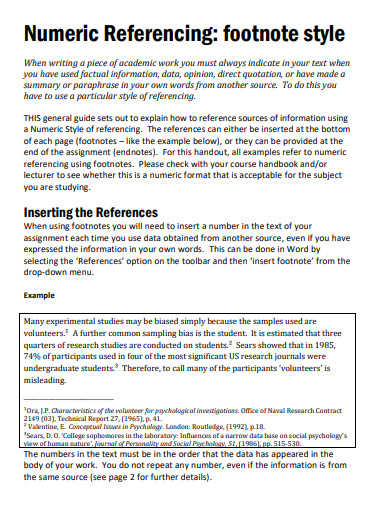
uswvarious1.blob.core.windows.net
23. IEEE Citation Works Cited Example
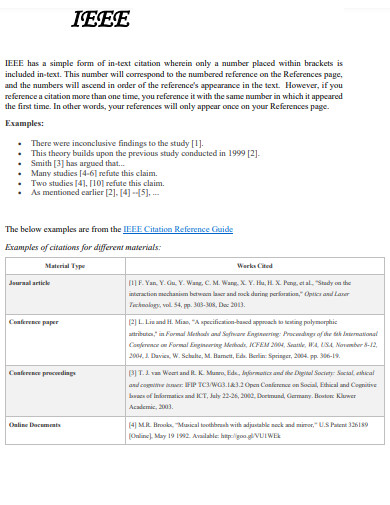
djes.info
24. IEEE Citation Annotated Bibliography Example

writingcenter.kennesaw.edu
25. IEEE Citation Appendix Example
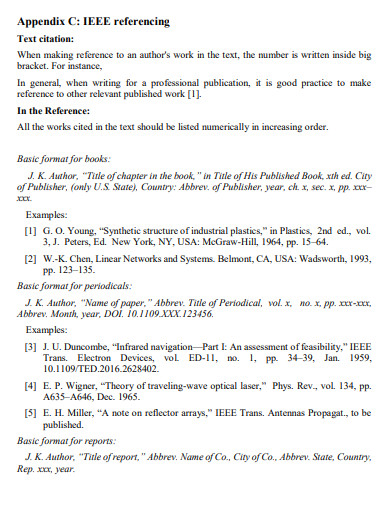
pu.edu.np
26. IEEE Citation Sources Example
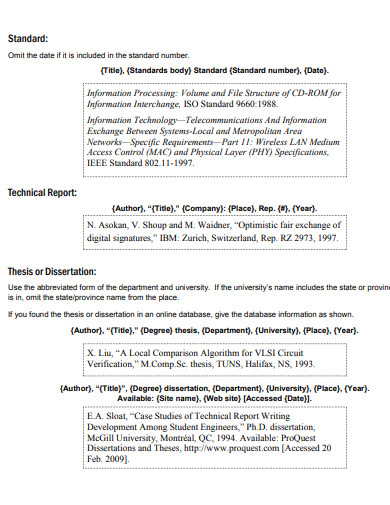
cdn.dal.ca
27. Simple IEEE Citation Example
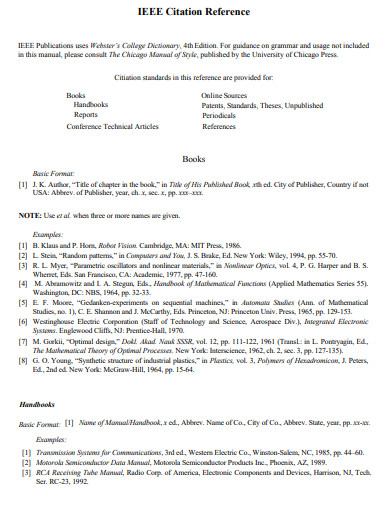
cit.fer.hr
28. Beginners IEEE Citation Example
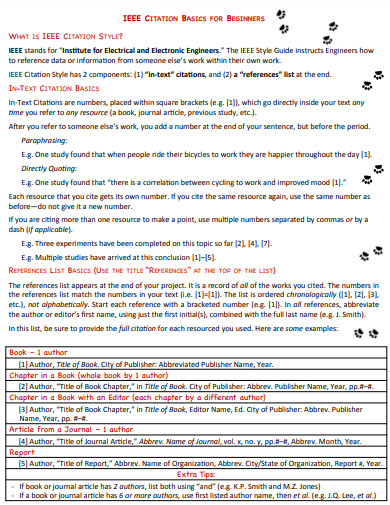
onlineacademiccommunity.uvic.ca
29. Guide IEEE Citation Example
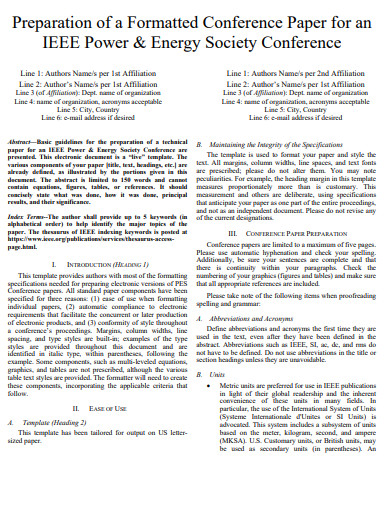
myperfectwords.com
30. IEEE Citation In-text Referencing Example
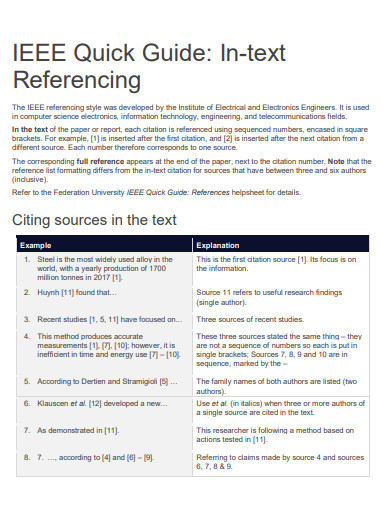
studyskills.federation.edu.au
What are IEEE Citations?
IEEE citation is a standardized format developed by the Institute of Electrical and Electronics Engineers for citing sources in technical disciplines. It is widely used in fields such as engineering, computer science, and information technology. The IEEE citation style provides a consistent and clear method of acknowledging the sources used in a research paper or article, enabling readers to locate and validate the cited works easily.
How to Write a Citation in IEEE Format
To ensure accurate and consistent citation, follow these step-by-step guidelines to construct a citation in IEEE format for your research paper or article.
Step 1: Identify the Reference Type:
Different reference types require specific formatting. Determine whether you are citing a journal article, conference paper, book, website, or any other type of source.
Step 2: Gather Essential Information:
Collect all the necessary information from the source, such as the author(s), title, publication date, journal or book title, page numbers, and DOI (Digital Object Identifier) if available.
Step 3: Organize the Information:
Arrange the collected information in the required order for your reference type. Pay attention to capitalization, punctuation, and formatting rules specified by IEEE.
Step 4: Construct the Citation:
Compose the citation following the IEEE citation format guidelines. This includes using numeric references within brackets, proper abbreviation rules, and specific formatting conventions for different types of sources.
Step 5: Include In-Text Citations:
Insert in-text citations within your paper or article using either parenthetical citation or numerical superscript format, as recommended by IEEE. Make sure to provide the corresponding full citation in the reference list.
Step 6: Compile the Reference List:
Create a reference list at the end of your paper, alphabetically listing all the cited sources. Format the entries according to IEEE guidelines, including details such as author(s), title, source, and publication information.
FAQs
Are there any comprehensive examples of IEEE in-text citations available?
Yes, we have a collection of 24+ in-text citation examples in PDF format that provide a clear understanding of how to incorporate citations within your text while adhering to the IEEE style guidelines.
What other citation styles should I be aware of besides IEEE?
While IEEE is commonly used in technical disciplines, it’s essential to be familiar with other citation styles as well. For instance, APA (American Psychological Association) and MLA (Modern Language Association) citation styles are widely used in social sciences and humanities, respectively. ACS (American Chemical Society) and Chicago styles are also prevalent in their respective fields.
What is the difference between a parenthetical citation and in-text citation in IEEE?
In IEEE citation, both parenthetical citation and numerical superscript citation are considered in-text citations. Parenthetical citation involves placing the citation information within parentheses, while numerical superscript citation uses sequential numbers in superscript format within the text.
Mastering the art of citation is an integral part of academic writing, ensuring the credibility and integrity of your research. The IEEE citation style provides a structured and standardized format for citing sources in technical fields. By following this comprehensive guide and utilizing the examples provided, you will be equipped with the necessary knowledge and skills to cite your sources accurately in IEEE format. Remember, proper citation not only acknowledges the contributions of others but also strengthens your own work by building upon a foundation of reliable research.


